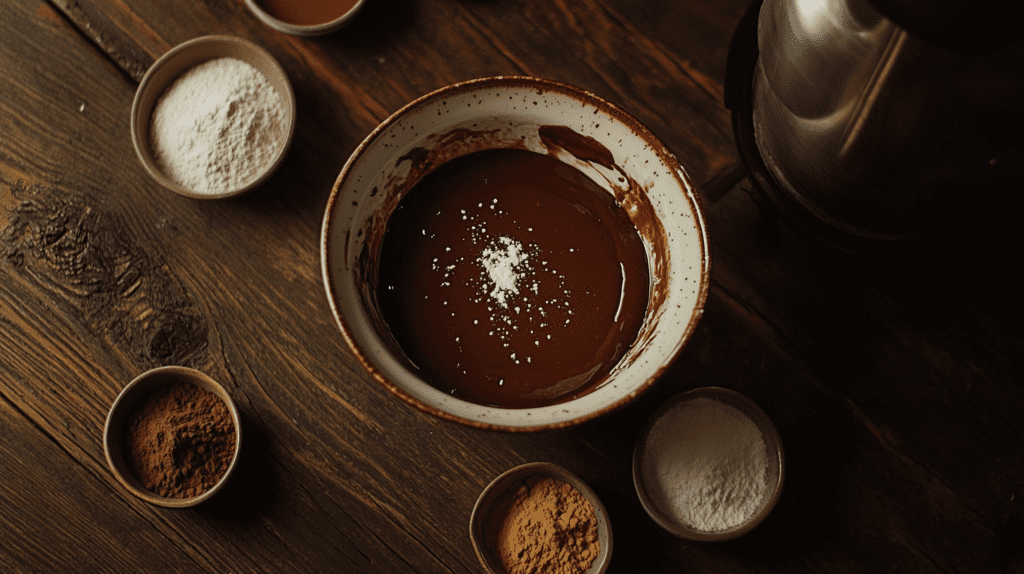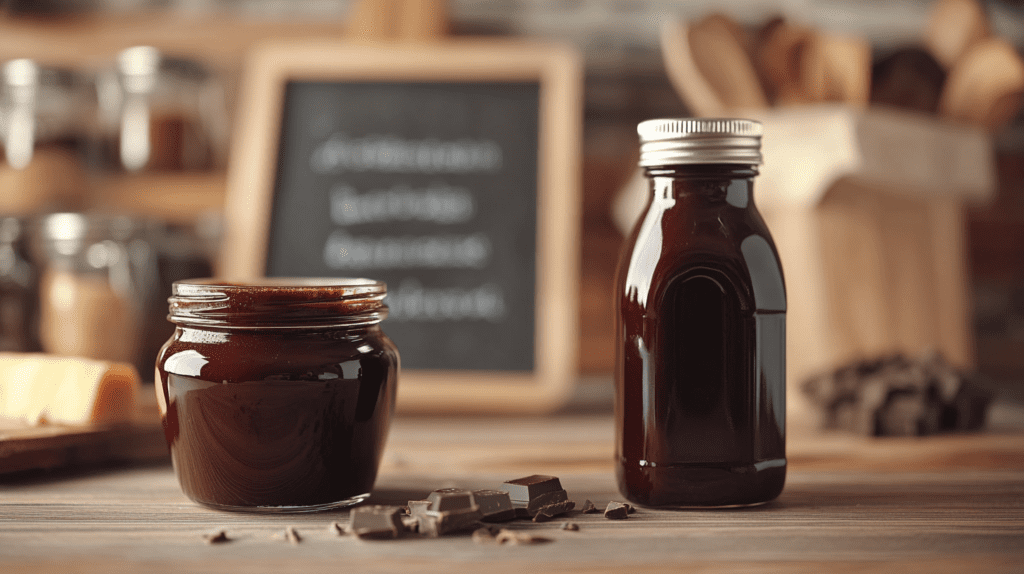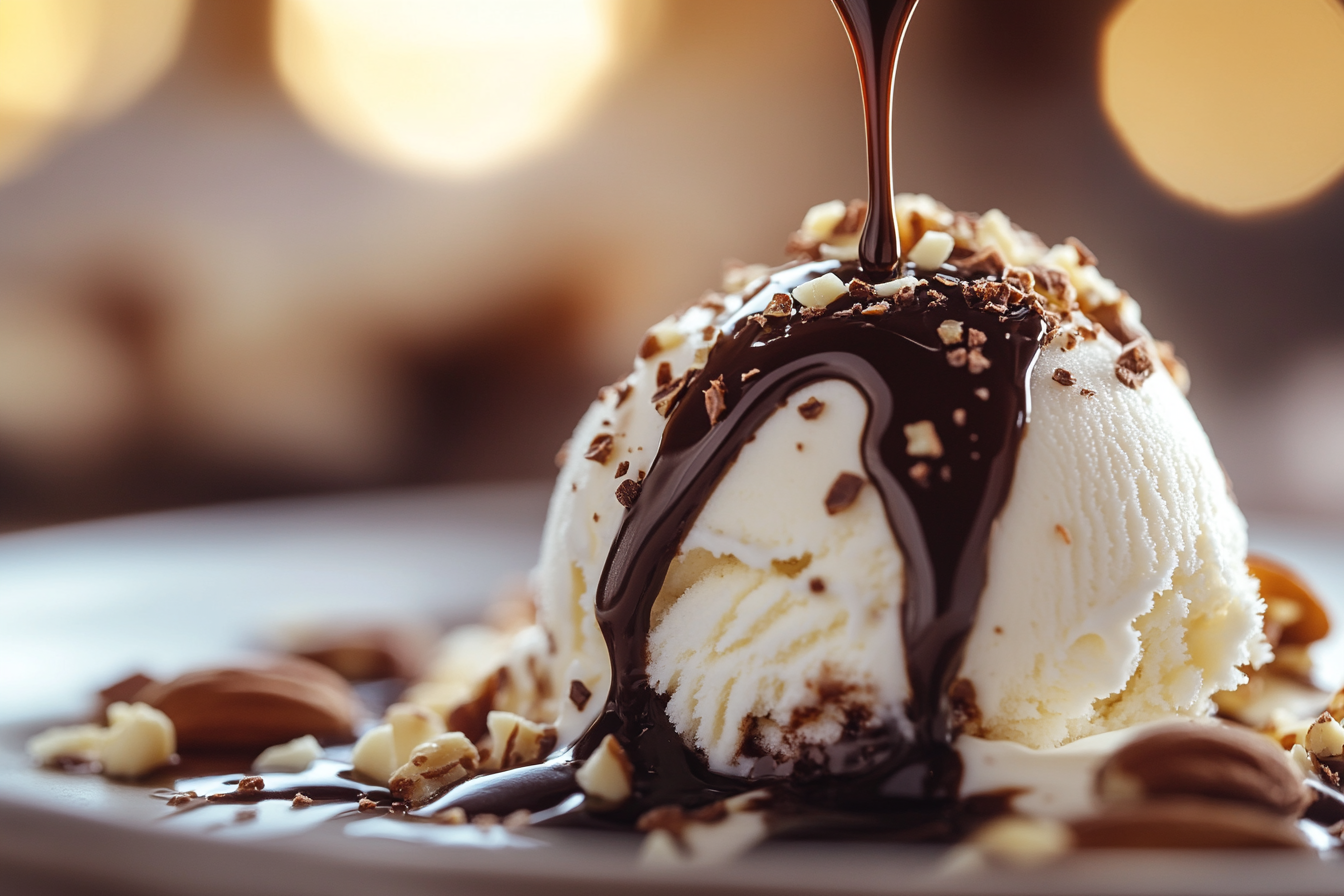Chocolate condiments like chocolate sauce and chocolate syrup are staples in many households, beloved for their versatility and flavor. But did you know they’re not the same thing? Although they might look alike, they differ in texture, ingredients, and culinary applications. Whether you’re drizzling them over desserts or stirring them into drinks, understanding these differences can elevate your recipes. Let’s dive into their unique characteristics and discover which one suits your needs best.
Understanding Chocolate Condiments
Why Compare Chocolate Sauce and Chocolate Syrup?
Many people confuse chocolate sauce and chocolate syrup, assuming they’re interchangeable. While both add rich, sweet flavor to a wide variety of foods and beverages, they serve slightly different purposes. Sauce typically offers a creamier, thicker texture due to ingredients like cream or butter, whereas syrup is often thinner, made primarily with water and sugar.
Knowing the difference isn’t just about semantics—it’s about selecting the right condiment for the right dish. Imagine preparing a decadent chocolate cake. A creamy, thick chocolate sauce can intensify the dessert’s richness. In contrast, for a quick milkshake or iced coffee, a liquid chocolate syrup blends effortlessly.
What Is Chocolate Sauce?
Chocolate sauce is a creamy, versatile topping made from cocoa powder, sugar, and a fat component like cream or butter. Its luxurious, rich consistency makes it perfect for drizzling over cakes, pancakes, or even fresh fruits. Some varieties also include vanilla extract for added aroma or salt for balancing sweetness.
A standout feature of chocolate sauce is its adaptability in both hot and cold dishes. It’s often used warm for desserts like sundaes or as a finishing glaze for tarts. Its flavor can also be adjusted, whether you’re looking for a bittersweet taste or a milkier profile.
What Is Chocolate Syrup?
Chocolate syrup, on the other hand, is a more fluid sweetener primarily made from cocoa powder, sugar, and water, occasionally with added stabilizers to ensure a long shelf life. Unlike sauce, it doesn’t rely on fats, making it lighter and more pourable.
Syrup is ideal for stirring into drinks, such as milk, coffee, or smoothies, where its thinner consistency ensures smooth blending. It’s also a favorite for kids when paired with milk for a quick chocolatey treat. Store-bought syrups often feature preservatives, giving them a longer shelf life, while homemade versions provide a fresher taste.
Ingredient Comparison
The fundamental difference lies in the ingredients. Chocolate sauce often includes butter or cream, while syrup omits these fats. This results in a notable divergence in texture, flavor, and use. Here’s a simplified comparison:

- Chocolate Sauce: Rich, creamy, and decadent.
- Chocolate Syrup: Light, thin, and shelf-stable.
These distinctions influence their applications. While chocolate sauce works better as a topping for desserts, syrup is ideal for beverages and casual snacking.
Definitions and Key Differences
Texture and Consistency
One of the most noticeable distinctions between chocolate sauce and chocolate syrup is their texture and consistency. Chocolate sauce tends to be thicker, offering a velvety, creamy finish that clings beautifully to desserts like pancakes or waffles. This thickness comes from its fat content, usually from cream or butter.
In contrast, chocolate syrup is thinner and more fluid. Its pourable consistency makes it ideal for mixing into beverages or drizzling over ice cream. However, this lighter texture might not work as well in recipes that require a thicker topping, like a molten chocolate cake.
Ingredient Breakdown
The ingredients in chocolate sauce and syrup define their unique qualities:
- Chocolate Sauce Ingredients: Cocoa powder, cream or butter, sugar, and sometimes vanilla. These components create a rich, indulgent taste.
- Chocolate Syrup Ingredients: Cocoa powder, sugar, water, and stabilizers (in store-bought versions). It’s designed to be shelf-stable and quick to use.
Chocolate syrup skips the fats, relying on water as its base. This makes it less rich but more versatile for quick-use recipes. Sauce, on the other hand, offers a depth of flavor and texture due to the addition of fats.
Nutritional Considerations
From a nutritional perspective, the added fats in chocolate sauce mean it’s often higher in calories and saturated fats compared to syrup. However, this richness also makes it more satisfying in smaller quantities. Chocolate syrup, while lighter, typically contains more sugar, especially in commercial varieties, to compensate for the lack of fat.
Culinary Applications
Chocolate Sauce in Baking and Cooking
When it comes to baking and cooking, chocolate sauce reigns supreme. Its creamy texture holds up well in desserts that require heating or layering. For instance:
- Cakes and Pastries: Use chocolate sauce as a glaze or filling.
- Hot Desserts: Drizzle warm sauce over brownies or bread puddings for added indulgence.
- Fruit Dips: Its consistency works wonderfully for dipping strawberries or bananas.
The fat content ensures that chocolate sauce doesn’t separate or crystallize easily when heated, making it versatile in various recipes.
Chocolate Syrup in Drinks and Snacks
Chocolate syrup is the go-to choice for beverages due to its liquid consistency. Whether you’re mixing it into milk, stirring it into coffee, or adding it to smoothies, syrup dissolves effortlessly.
Some popular uses include:
- Milkshakes: Blend syrup with milk and ice cream for a creamy drink.
- Coffee Enhancer: Add a drizzle for a mocha-inspired brew.
- Quick Snacks: Use as a topping for ice cream or yogurt.
Its ease of use and long shelf life make it a favorite for families, especially for creating instant chocolatey treats for kids.
Discover more about the benefits of chocolate in desserts.

Overlapping Uses and Substitutions
Although sauce and syrup have their specialties, they can sometimes be used interchangeably. For instance:
- In a pinch, chocolate syrup can substitute for sauce in a recipe requiring a liquid chocolate topping. However, the thinner consistency might result in a less rich final product.
- Similarly, chocolate sauce can act as a syrup replacement in beverages, but you might need to thin it with a little warm water or milk to achieve the desired texture.
By understanding these overlaps, you can creatively use what’s on hand without compromising flavor or functionality.
Nutritional Insights
Nutritional Breakdown of Chocolate Sauce
Chocolate sauce, thanks to its use of cream or butter, is a calorie-dense treat. It offers a rich and indulgent experience but should be consumed in moderation. Let’s break down its typical nutritional content per 100 grams:
| Nutrient | Amount (per 100g) |
|---|---|
| Calories | 450 kcal |
| Fat | 30 g |
| Saturated Fat | 18 g |
| Sugar | 40 g |
| Protein | 3 g |
Nutritional Profile of Chocolate Syrup
Chocolate syrup, with its water-based formula, is lower in fat but often higher in sugar. While it’s lighter in calories, the high sugar content can add up quickly. Here’s a typical nutritional breakdown for 100 grams of chocolate syrup:
| Nutrient | Amount (per 100g) |
|---|---|
| Calories | 280 kcal |
| Fat | 1 g |
| Saturated Fat | 0.5 g |
| Sugar | 60 g |
| Protein | 1 g |
Healthier Alternatives
For those seeking healthier options, both chocolate sauce and chocolate syrup can be adapted to suit dietary needs:
- Low-Sugar Variants: Substitute refined sugar with natural sweeteners like stevia or honey.
- Vegan Choices: Replace dairy-based ingredients in sauce with coconut cream or almond milk.
- Keto-Friendly Options: Use sugar-free chocolate and erythritol to keep carbs low.
By customizing your recipes, you can enjoy these chocolatey delights guilt-free while catering to specific dietary preferences.
Buying and Storing Tips
How to Choose the Best Chocolate Sauce or Syrup
When purchasing chocolate sauce or syrup, the quality of ingredients should be your primary consideration. Look for products with minimal additives and a high cocoa content. Here’s a quick guide to make an informed choice:
- Chocolate Sauce:
- Opt for sauces with cream or butter listed as primary ingredients.
- Avoid products with excess stabilizers or artificial flavors.
- Chocolate Syrup:
- Check for natural sweeteners over high-fructose corn syrup.
- Look for organic or preservative-free options.
Understanding how you’ll use the product also matters. If it’s for drinks, a thinner syrup may suffice. For baking or topping desserts, a richer sauce will yield better results.
Storage and Shelf Life
Proper storage ensures the longevity and quality of both chocolate sauce and syrup. Follow these tips for optimal freshness:
- Chocolate Sauce:
- Store in an airtight container in the refrigerator.
- Homemade versions typically last 7–10 days, while store-bought varieties can last up to a month.
- Chocolate Syrup:
- Keep in a cool, dry place if unopened.
- Once opened, refrigerate it to maintain its flavor. Syrups with stabilizers can last several weeks or more.
For both, always check for signs of spoilage like mold or unusual smells, especially in homemade products.
DIY Chocolate Sauce and Syrup
Easy Homemade Chocolate Sauce Recipe
Creating a rich, decadent chocolate sauce at home is surprisingly simple. Homemade versions allow you to control the sweetness, consistency, and overall flavor. Here’s how to make it:
Ingredients:
- ½ cup cocoa powder (unsweetened)
- 1 cup heavy cream
- ½ cup granulated sugar (adjust to taste)
- 2 tablespoons butter
- 1 teaspoon vanilla extract
- Pinch of salt
Instructions:
- Combine the Dry Ingredients: In a medium saucepan, whisk together the cocoa powder, sugar, and salt to eliminate lumps.
- Add Cream: Gradually pour in the heavy cream while whisking continuously to form a smooth mixture.
- Heat Gently: Place the saucepan over medium heat. Stir constantly to prevent the sauce from burning or sticking to the bottom.
- Incorporate Butter: Once the mixture starts to bubble slightly, stir in the butter until it’s fully melted and incorporated.
- Add Vanilla: Remove from heat and stir in the vanilla extract for an aromatic touch.
- Cool and Serve: Let the sauce cool to room temperature before serving. Store leftovers in an airtight container in the refrigerator for up to a week.
Simple Chocolate Syrup Recipe
For those who prefer a lighter, more fluid chocolate topping, this syrup recipe is a game-changer. It’s perfect for drizzling over desserts or blending into drinks.
Ingredients:
- ¾ cup cocoa powder (unsweetened)
- 1½ cups water
- 1 cup granulated sugar (or a sugar substitute)
- ½ teaspoon vanilla extract
- Pinch of salt
Instructions:
- Mix Cocoa and Water: In a saucepan, whisk together the cocoa powder and water until smooth.
- Dissolve Sugar: Add the sugar and salt, and place the mixture over medium heat. Stir frequently until the sugar dissolves completely.
- Simmer and Thicken: Allow the mixture to simmer for 5–7 minutes, stirring occasionally. The syrup will thicken slightly as it cooks.
- Add Vanilla: Remove from heat and stir in the vanilla extract.
- Cool and Store: Let the syrup cool before transferring it to a clean jar or bottle. Store in the refrigerator for up to two weeks.
Customizing Your Recipe
Both recipes are easily adjustable to fit your taste or dietary needs:
- For a richer flavor: Use dark cocoa powder or add a tablespoon of espresso powder.
- For a thinner consistency: Add more cream (for sauce) or water (for syrup).
- For a unique twist: Experiment with spices like cinnamon or nutmeg, or add a hint of orange zest.
Nutritional Content (Per 100g)
Homemade Chocolate Sauce:
| Nutrient | Amount |
|---|---|
| Calories | 300 kcal |
| Fat | 20 g |
| Saturated Fat | 12 g |
| Sugar | 25 g |
| Protein | 3 g |
Homemade Chocolate Syrup:
| Nutrient | Amount |
|---|---|
| Calories | 200 kcal |
| Fat | 1 g |
| Saturated Fat | 0 g |
| Sugar | 50 g |
| Protein | 1 g |
Frequently Asked Questions
Can chocolate syrup be used as a topping for cakes?
Yes, chocolate syrup can work as a topping for cakes, especially if you’re aiming for a light drizzle effect. However, due to its thinner consistency, it might not stay in place like chocolate sauce. To enhance its thickness, consider reducing the syrup over low heat for a few minutes before applying it to your cake.
Which is healthier: chocolate sauce or syrup?
The healthiness of chocolate sauce versus syrup depends on the ingredients and serving size. Chocolate syrup is typically lower in calories and fat but often contains more sugar. On the other hand, chocolate sauce is richer, thanks to cream and butter, but might be more satisfying in smaller portions. Homemade versions of both allow you to control the sugar and fat content.
Is chocolate syrup vegan-friendly?
Most store-bought chocolate syrups are vegan-friendly since they’re made without dairy or animal-derived products. However, always check the label for ingredients like honey or non-vegan stabilizers. If you’re making it at home, use water, cocoa powder, and sugar to ensure it aligns with vegan dietary requirements.
Can I freeze chocolate sauce for later use?
Yes, chocolate sauce can be frozen for longer storage. Transfer it to an airtight, freezer-safe container, leaving a little room for expansion. When ready to use, thaw it in the refrigerator overnight and reheat gently on the stove or in the microwave, stirring to restore its smooth texture.
What’s the best way to reheat chocolate sauce?
The best way to reheat chocolate sauce is to use a double boiler or a microwave. For the double boiler method, place the sauce in a heatproof bowl over a pot of simmering water and stir until warmed through. In the microwave, heat it in short bursts (10–15 seconds), stirring between intervals to avoid overheating or curdling.
Why does homemade chocolate sauce solidify?
Homemade chocolate sauce may solidify in the refrigerator due to the fats (from butter or cream) solidifying at low temperatures. To restore its pourable consistency, simply reheat it gently and stir well. Adding a small amount of milk or cream while reheating can help smooth out the texture.
Conclusion
Whether you prefer chocolate sauce for its creamy richness or chocolate syrup for its light versatility, understanding their differences can enhance your culinary creations. From decadent desserts to quick snacks, these chocolatey companions are indispensable in the kitchen. With homemade recipes and mindful choices, you can enjoy the best of both worlds—tailored to your taste and dietary needs. Experiment, indulge, and let the chocolate magic unfold!


1 thought on “What’s the Difference Between Chocolate Sauce and Chocolate Syrup: A Comprehensive Guide”